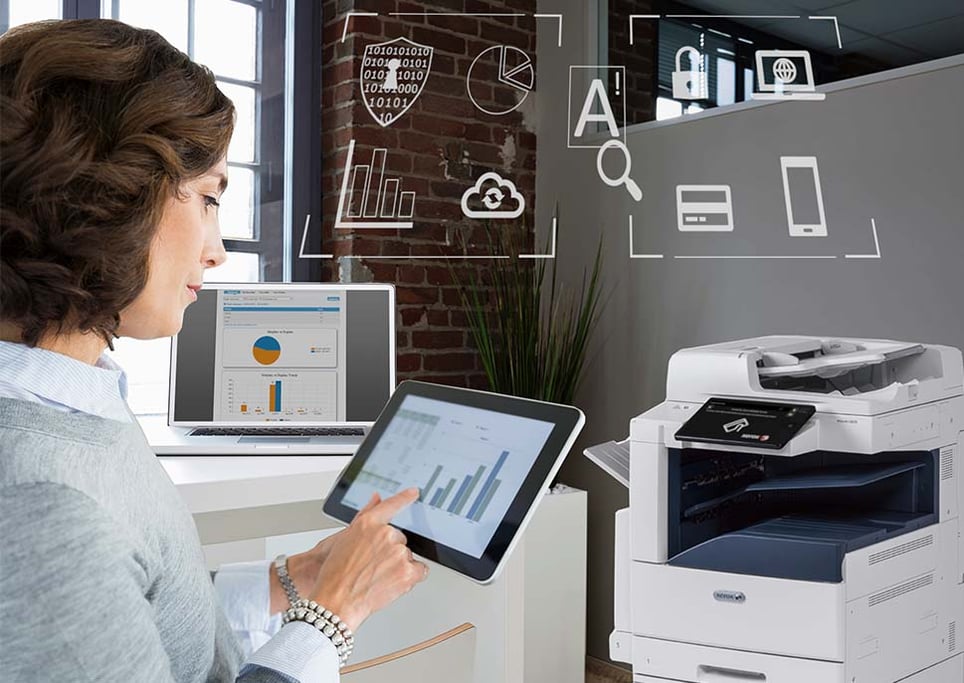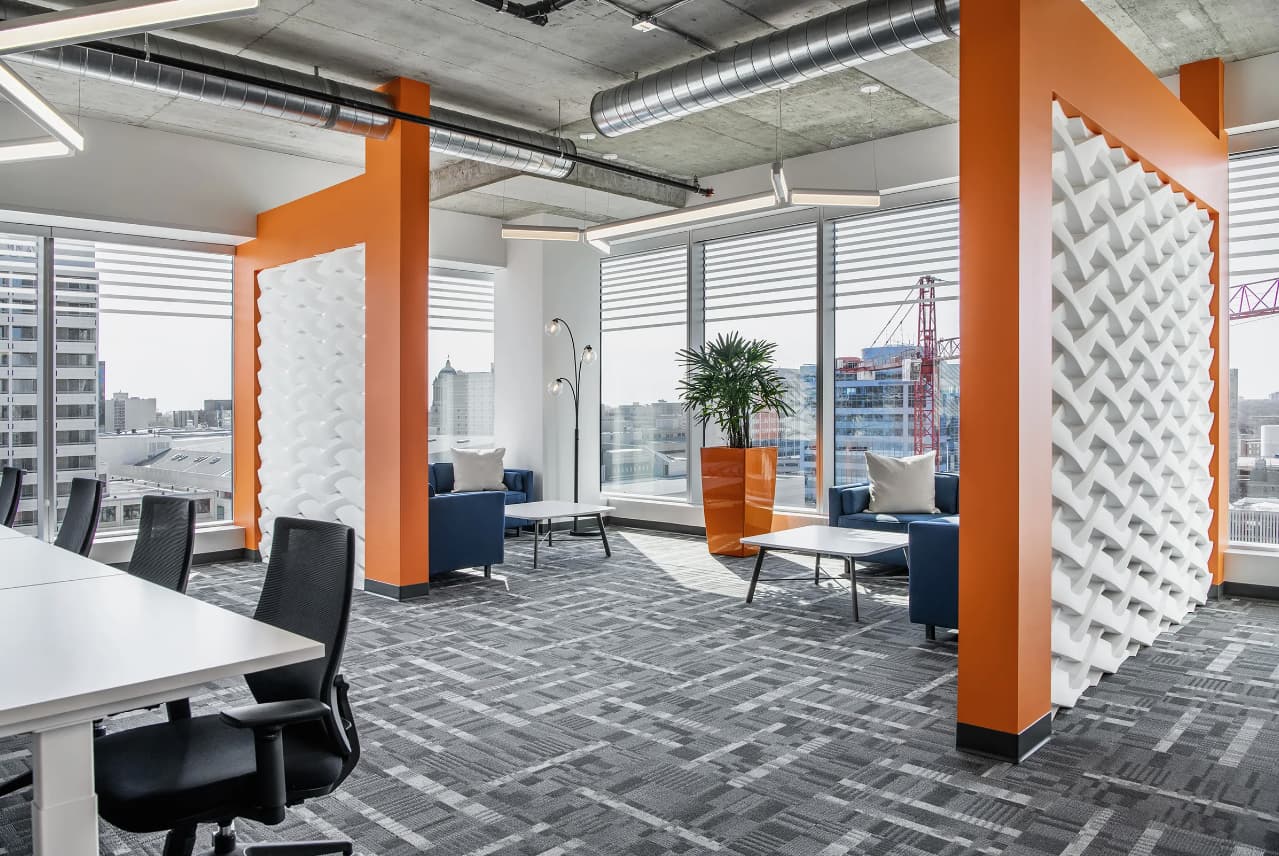After a long period of working from home, your company may now be planning a return to the office, Many organizations are shifting towards a hybrid work model, which blends time working at the office and at home.
When you are planning the transition to a hybrid workspace, the technology you choose is one of the key areas for consideration.
Of course, communication systems like Zoom or Microsoft Teams will continue to play a vital role. Other forms of technology are also important so in this blog post we’ll take a look at some of the key technology for a hybrid workplace.

Employee Wellbeing
Technology can help to safeguard staff working on-site in your hybrid workplace, which will reassure anyone who is anxious about returning to the office.
Dojo Airborne Transmission Heatmap is a system which tracks the movement of people around the workplace, feeding the information into a data-driven scoring system. Dojo technology then generates office layouts and seating charts which can be used to create your hybrid office interior design.
Digital signage can display reminders about social distancing and safety protocols or details of when a room was last cleaned. You can also implement touchless solutions such as contactless visitor check-in and hands-free joining for video calls.

Video and Audio
As part of the transition to a hybrid workforce, you need to prepare for every meeting to have at least one remote participant. So it’s important to have high quality video conferencing and audio equipment in every meeting room, as well off-site with every remote worker.
Professional conferencing cameras with smart functionality can automatically move the camera to the speaker, helping remote staff feel like they are in the room. However, poor audio diminishes this effect so make sure that you support your video equipment with premium speaker phones.

Cybersecurity
When you’re transmitting commercially sensitive information across the internet, security is of paramount importance. Using a VPN (Virtual Private Network) will keep your data secure by encrypting internet communications.
You should also ensure that your IT network is protected by antivirus software, and that all staff receive training on internet security.

Cloud-Based Workflow Solutions
Working and storing information in the cloud makes it easier for employees to access the data wherever they are. This is especially important for staff who work in multiple locations.
Software as a Service (SaaS) solutions allow people to use software tools from any location, and a document management system helps to manage the flow of information between employees. Tools such as Asana, AirTable and Trello are a useful way to create a collaborative workspace that can be accessed from different locations.

Asynchronous Communication Tools
Many people report feelings of fatigue caused by overscheduling long online meetings when working from home. Using asynchronous communication tools such as chat functions or Slack channels can help hybrid workers avoid this.
They provide more flexible options for communication, reducing the need for employees to be online for long periods of time. This encourages informal chats and unscheduled collaboration, as well as creating connections that help remote workers feel included in day-to-day office life.
There is a lot to consider when you’re creating a new hybrid workspace for your company but working with an experienced commercial interior design agency like Truspace helps to simplify your decision-making process. Together we can create a modern office design that meets your budgetary requirements and eases the transition to hybrid working.
Contact Truspace today to take the first steps towards your new hybrid workspace.




